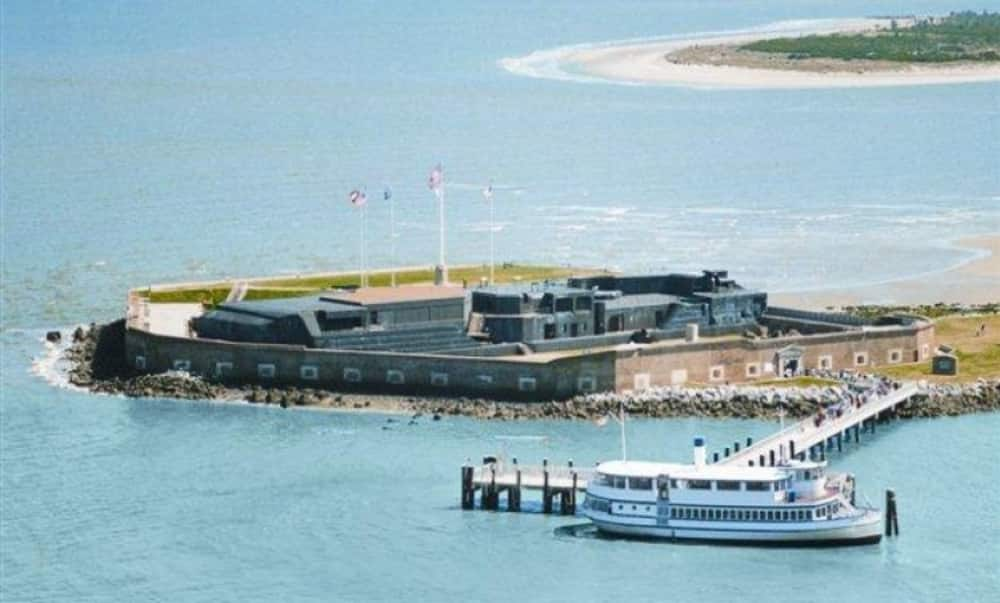The Religious Society of Friends, also referred to as the Quaker Movement, was founded in England in the 17th century by George Fox. He and other early Quakers, or Friends, were persecuted for their beliefs, which included the idea that the presence of God exists in every person. Quakers rejected elaborate religious ceremonies, didn’t have official clergy and believed in spiritual equality for men and women. Quaker missionaries first arrived in America in the mid-1650s. Quakers, who practice pacifism, played a key role in both the abolition and women’s rights movements. Many, but not all, Quakers consider themselves Christians.
George Fox
In the 1640s, George Fox, then a young man, left his home in the English Midlands and traveled around the country on a spiritual quest. It was a time of religious turmoil in England, with people seeking reform in the Church of England or starting their own competing churches.
Over the course of his journey, as Fox met others searching for a more direct spiritual experience, he came to believe that the presence of God was found within people rather than in churches. He experienced what he referred to as “openings,” instances in which he felt God was talking directly to him.
Fox shared his beliefs with others and spoke to increasingly larger gatherings. Even though his views were viewed by some as a threat to society and he was jailed for blasphemy in 1650, Fox and other early Quakers continued to share their beliefs. In 1652, he met Margaret Fell, who went on to become another leader in the early Quaker movement. Her home, Swarthmoor Hall in Northwest England, served as a gathering place for many of the first Quakers. Fox and Fell married in 1667.
What Is a Quaker?
Quakerism continued to spread across Britain during the 1650s, and by 1660 there were around 50,000 Quakers, according to some estimates.
A number of Quaker beliefs were considered radical, such as the idea that women and men were spiritual equals, and women could speak out during worship. Quakers didn’t have official ministers or religious rituals. They opted not to use honorific titles such as “Your Lordship” and “My Lady.”
Based on their interpretation of the Bible, Quakers were pacifists and refused to take legal oaths. Central to their beliefs was the idea that everyone had the Light of Christ within them.
1680s thousands of Quakers were persecuted and jailed. Fox spent much of the 1660s behind bars.
Penn Quakers
Quaker missionaries arrived in North America in the mid-1650s.The first was Elizabeth Harris, who visited Virginia and Maryland. By the early 1660s, more than 50 other Quakers had followed Harris.
However, as they moved throughout the colonies, they continued to face persecution in certain places, such as Massachusetts, where four Quakers were executed.
In 1681, King Charles II gave William Penn, an English Quaker, a large land grant in America to pay off a debt owed to his family. Penn, who had been jailed multiple times for his Quaker beliefs, went on to found Pennsylvania as a sanctuary for religious freedom and tolerance.
Quakers were heavily involved in Pennsylvania’s new government and held positions of power in the first half of the 18th century, before deciding their political participation was forcing them to compromise some of their beliefs, including pacifism.
Quaker Beliefs
The Quakers took up the cause of protecting Native Americans’ rights. They also were early abolitionists. In 1758, Quakers in Philadelphia were ordered to stop buying and selling slaves. By the 1780s, all Quakers were barred from owning slaves.
In the 19th century, many of the leaders of the women’s suffrage movement in the U.S. were Quakers, including Lucretia Mott and Alice Paul.
Famous Quakers
To date, two U.S. presidents have been Quakers: Herbert Hoover and Richard M. Nixon.
Other famous Quakers include author James Michener, philanthropist Johns Hopkins and John Cadbury, founder of the chocolate business bearing his name.
Quaker Religion Today
Today, there are more than 300,000 Quakers around the world, by some estimates, with the highest percentage in Africa.
There are different branches of Quakerism; some have “programmed” worship services that are led by pastors, while others practice “unprogrammed” worship, which is done in silence (those who are inspired can speak) without the guidance of a pastor.
Unprogrammed Friends refer to their congregations as “meetings,” while programmed Quakers use the term meeting as well as “church” to refer to their congregations. Many, but not all, Quakers consider themselves Christians.
Most Quakers have abandoned the plain style of clothing they once wore, unlike the Amish, with whom Quakers are sometimes confused. The Amish, who live separate from society and reject modern technology, are a Christian denomination whose origins date back to 16th century Switzerland.
Another group with whom the Friends are sometimes mistaken for, the Shakers (officially the United Society of Believers in Christ’s Second Appearance) were founded in England in the 18th century. The Shakers, who were pacifists like the Quakers and Amish, came to America and lived in communal settlements and were celibate. The Shaker sect has essentially died out.





:max_bytes(150000):strip_icc()/Fort-Sumer-1861bombardment-4500-56a488685f9b58b7d0d76f31.jpg)

